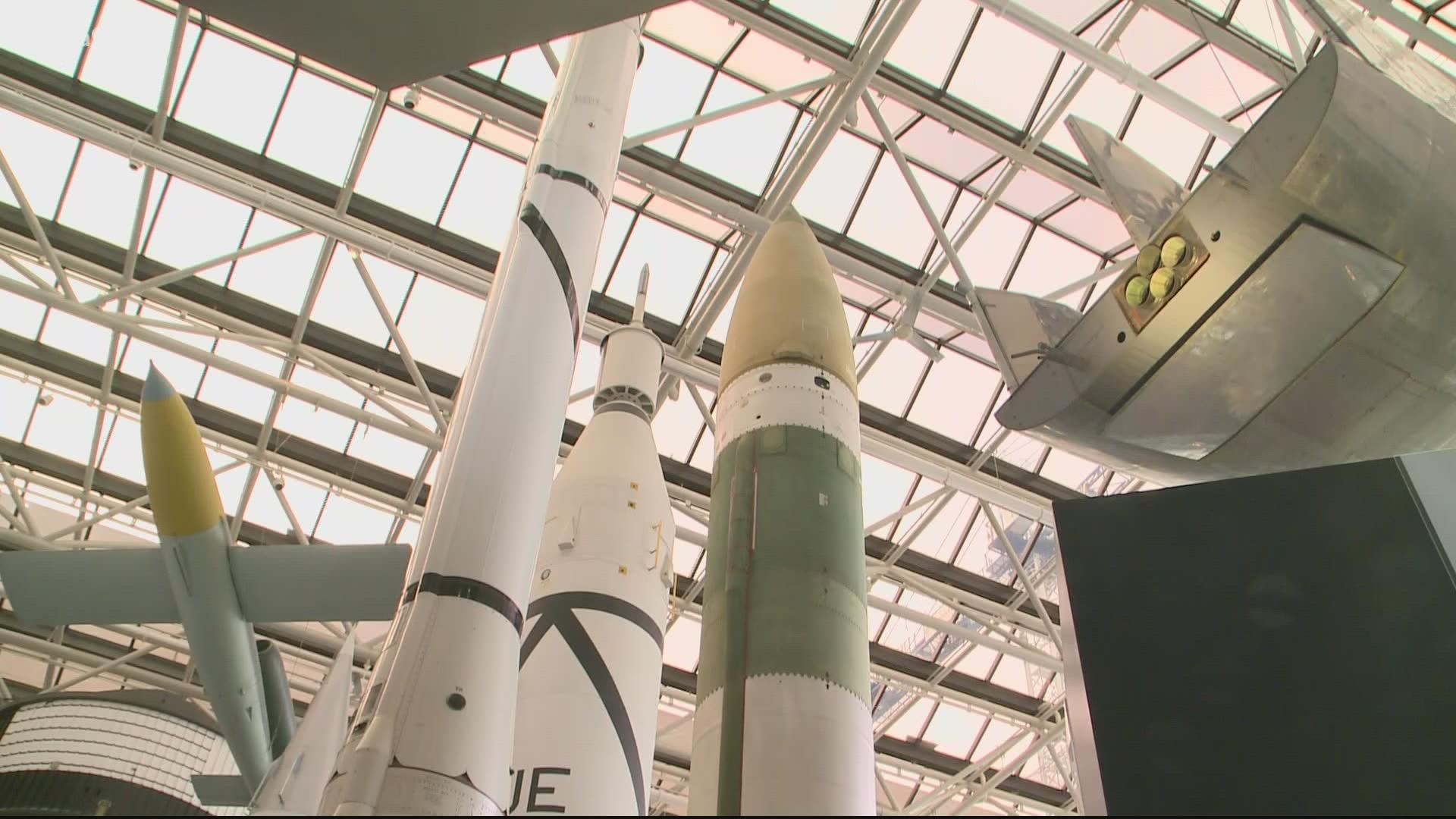WASHINGTON — We have seen amazing accomplishments and advancements in air and space travel over the last forty-five years.
The Concorde made its first commercial flight in 1976.
A Japan Air Lines Boeing 747 made the first non-stop flight between New York and Tokyo.
NASA's modified Boeing 747 SCA (Shuttle Carrier Aircraft) lifting off on its first flight.
There's also been considerable bravery and tragedy.
The Smithsonian's National Air & Space Museum first opened its doors along D.C.'s National Mall in 1976. Curators and engineers have deemed its hallowed halls are due for an update. Laying eyes on the west-end exhibit space, visible to a WUSA9 crew as workers scurry back and forth through an open gate that's often closed.
"We can't go in without PPE and steel-toed shoes," says our guide.
It was just our luck to be there at that time and be able to peer in upon the space that the public hasn't seen since late 2018.
New exhibit signs adorn the ceilings.
The 'Spirit of St. Louis', one of the most famous aircraft in the world, sits alone in a large room donned in a protective wrap. It was the center of attention in 1927 after Charles Lindbergh became the first pilot to fly it solo across the Atlantic Ocean from New York to Paris.
The museum is right in the middle of its biggest change since its doors opened in America's bicentennial anniversary year.
"We are really re-envisioning the entire museum. Transforming the building itself and revitalizing all the galleries," said Dr. Margaret A. Weitekamp, Curator of the Museum's Social and Cultural History of Spaceflight and the Department Chair of the museum's Space History Department.
"You're really going to see a visible change. More diverse content about the people who made all of this stuff happen," she said.
Strolling through the Museum's 'Time and Navigation' gallery, the irony sinks in that its time is rapidly coming to a close.
"This is something people will want to come and see before we close at the end of March because this is all gonna go away," said Dr. Weitekamp. "We've really been thinking in new ways about new kinds of thematic exhibits we can do in the new space."
There's no final answer yet for what will occupy this second story space in the future.
"It's a wonderful process of working with colleagues to think about what are the many different kinds of stories we would want to tell and the really, frankly, painful process of trying to edit that down into what we can fit in a 5,000 square foot space," said Weitekamp.
Getting rockets off the ground and into space is one thing. Moving them once they're a permanent museum exhibit is quite another. I figured it would put quite a stress on a museum curator who recognizes the irreplaceable value of our nation's manmade (and woman-made, of course) air and space treasures.
Not so for Weitekamp who has implicit trust in the crew that works with the museum's exhibits.
"Some of them (the exhibits) will be a protect in place. We'll just leave them in place and sometimes even build a bit of a room around them that protects them and allows them to do construction on the rest of the space," she said.
Many of the exhibits can be disassembled and brought out of the museum. Either moved to other Smithsonian locations or into storage.
Weitekamp and other museum officials are quick to point out that the Air & Space Museum's Steven F. Udvar-Hazy Center in Chantilly, Virginia remains open during the downtown location's renovation and features iconic exhibits including the Space Shuttle and the SR-71 'Blackbird'.
"The purpose of this renovation really is to create the best environment we can for these historic objects," said Dr. Weitekamp. "There's new stuff that we want to be able to tell people about. Objects. People. Things like that. This is our chance to bring some of that fresh content."
Work began on the west side of the museum in 2018. The length of the entire renovation project was expected to last seven years.
You can see a detailed list and description of the eight new galleries scheduled to open in the museum's west-end exhibition space in the fall of 2022 by clicking HERE.
Work on the remaining exhibits and galleries in the museum's east-end space is not expected to be complete until 2025.
Some of the displayed items related to air and space content can be found in other Smithsonian museums, including several meteorites at the National Museum of Natural History, the Tomahawk cruise missile at the National Museum of the American Indian, the PT-13D Stearman Kaydet aircraft at the National Museum of African American History and Culture, the Huey helicopter at the National Museum of American History and the Goddard 1935 Series-A Rocket in the new "FUTURES" exhibition at the Arts and Industries Building.
Virtual content and additional information about the Smithsonian's National Air and Space Museum can be found HERE.

